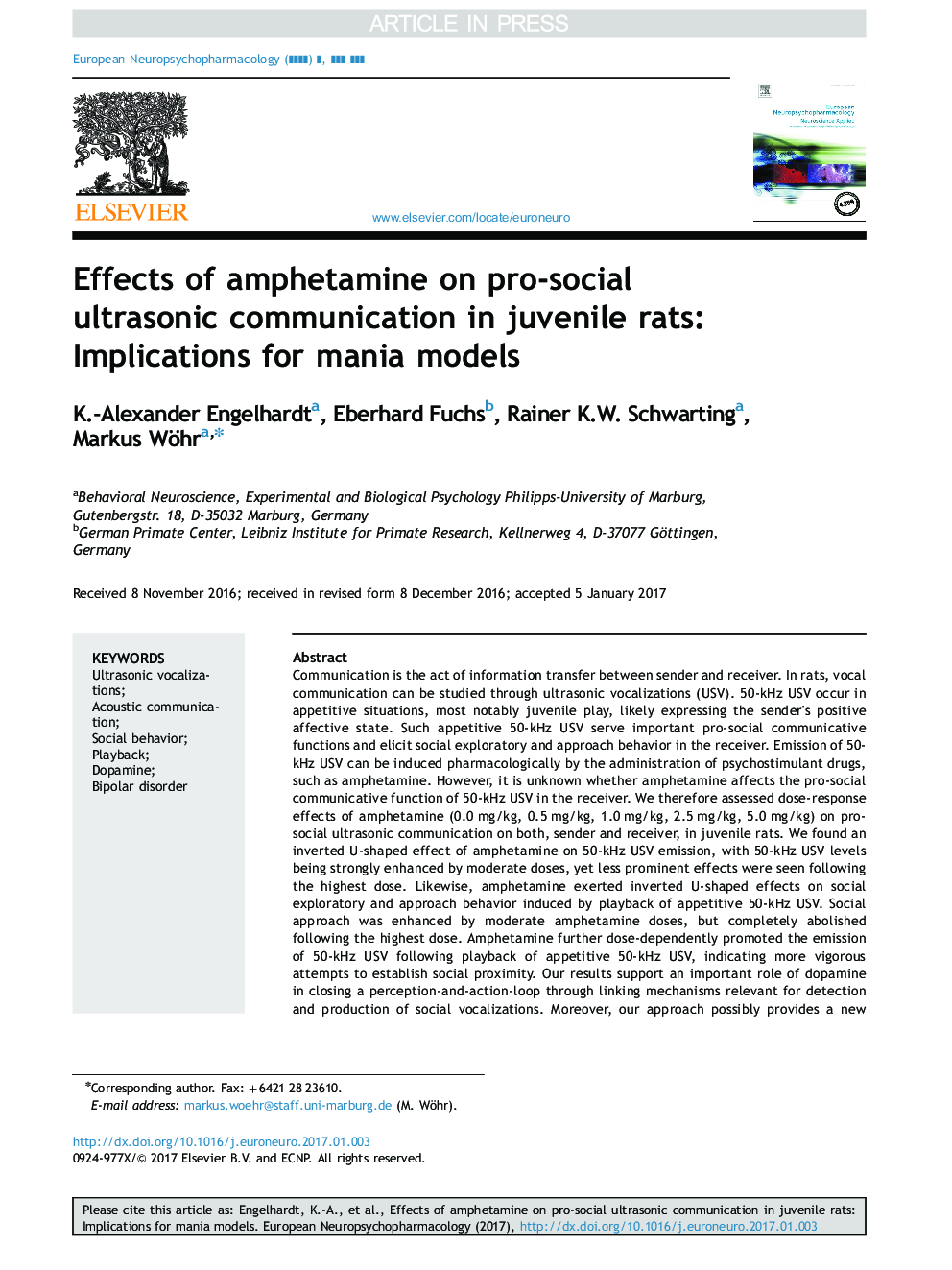| Article ID | Journal | Published Year | Pages | File Type |
|---|---|---|---|---|
| 4930754 | European Neuropsychopharmacology | 2017 | 13 Pages |
Abstract
Communication is the act of information transfer between sender and receiver. In rats, vocal communication can be studied through ultrasonic vocalizations (USV). 50-kHz USV occur in appetitive situations, most notably juvenile play, likely expressing the sender׳s positive affective state. Such appetitive 50-kHz USV serve important pro-social communicative functions and elicit social exploratory and approach behavior in the receiver. Emission of 50-kHz USV can be induced pharmacologically by the administration of psychostimulant drugs, such as amphetamine. However, it is unknown whether amphetamine affects the pro-social communicative function of 50-kHz USV in the receiver. We therefore assessed dose-response effects of amphetamine (0.0 mg/kg, 0.5 mg/kg, 1.0 mg/kg, 2.5 mg/kg, 5.0 mg/kg) on pro-social ultrasonic communication on both, sender and receiver, in juvenile rats. We found an inverted U-shaped effect of amphetamine on 50-kHz USV emission, with 50-kHz USV levels being strongly enhanced by moderate doses, yet less prominent effects were seen following the highest dose. Likewise, amphetamine exerted inverted U-shaped effects on social exploratory and approach behavior induced by playback of appetitive 50-kHz USV. Social approach was enhanced by moderate amphetamine doses, but completely abolished following the highest dose. Amphetamine further dose-dependently promoted the emission of 50-kHz USV following playback of appetitive 50-kHz USV, indicating more vigorous attempts to establish social proximity. Our results support an important role of dopamine in closing a perception-and-action-loop through linking mechanisms relevant for detection and production of social vocalizations. Moreover, our approach possibly provides a new means to study mania-like aberrant social interaction and communication in animal models for bipolar disorder.
Keywords
Related Topics
Life Sciences
Neuroscience
Biological Psychiatry
Authors
K.-Alexander Engelhardt, Eberhard Fuchs, Rainer K.W. Schwarting, Markus Wöhr,
